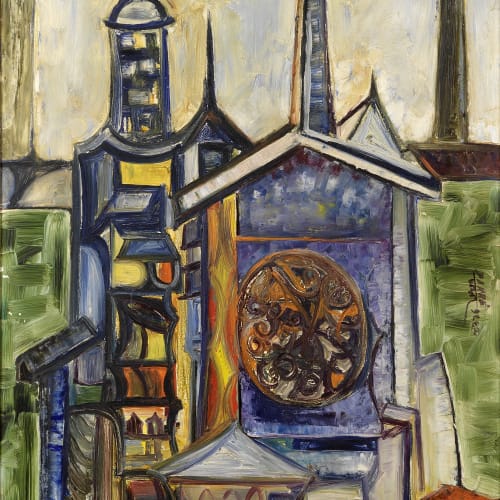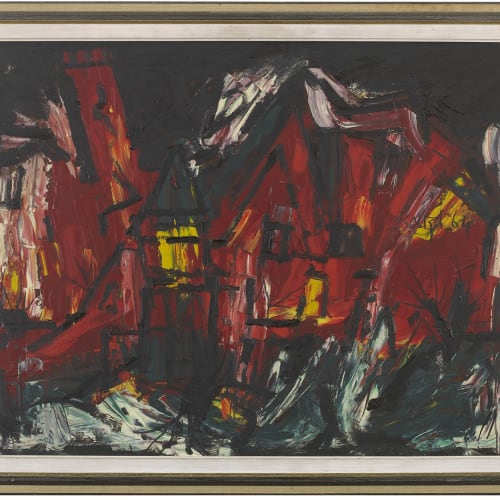Sadanand Bakre (1920-2007) and Francis Newton Souza (1924-2002) were both founding members of the Bombay Progressive Artists' Group (PAG), established in 1947 following Indian Independence. Along with their contemporaries MF Husain, SH Raza, KH Ara and HA Gade, they established the group with the aim of revolutionising Indian modern art. They desired aesthetic freedom from the shackles of the imposed artistic teachings of the British, and sought to create an indigenous style of modernism based on the amalgamation of Indian society and imagery with contemporary Western artistic practices such as cubism and expressionism. The exhibition is conceived to show the how the work of each artist influenced that of their contemporaries, and the various stylistic developments made during this period.
Bakre, a sculptor as well as a painter was based in Ladbroke Grove, and many of his works bear his address and telephone number on their reverse. Whilst in London he was represented by Nicholas Treadwell Gallery, which as one point operated out of a bus. His style evolved throughout his time in London, but his main subject matter was the landscape, often painted in bold colours, and with a strongly sculptural quality to them.
Souza arrived in London in 1949, and would spend the next 18 years there. He struggled to establish himself until his work appeared alongside that of Padamsee and Raza at Paris at Galerie Raymond Creuze in Paris in 1953. This was followed shortly after by his seminal solo show at London's Gallery One in 1955, which coincided with his publication of his autobiographical essay Nirvana of a Maggot. Souza's oeuvre was inspired by his Catholic upbringing in Goa, as well as his experiences in London. His landscapes are boldly and skilfully executed and often feature the North London skyline of Hampstead.
Lancelot Ribeiro (1933-2010) was never a member of the PAG, however was influenced by its ideals and the artistic sentiments its members stood for. Born into a Catholic family from Goa, Ribeiro was Souza's half-brother and followed him to London in 1950, where he undertook an accountancy course, honing his artistic skills at St. Martin's School of Art, London. He returned to India in 1955 and continued to work as an accountant. His first solo-show at the Bombay Art Society Salon took place in 1961, and was a great success. Following this he was commissioned by the TATA institute to paint a large mural for their head offices, and the same year his work was included in the important international show 'Ten Indian Painters', which then went on an international tour.
Ribeiro came to live in London in 1962, where he remained for the rest of his life. His work is characterised by bold lines and colourful depictions of landscapes, heads and figures. The 1960s were a successful period for the artist; however he was largely ignored during the latter part of his career. There has been a recent resurgence in interest in his work due to a major retrospective at Asia House in London, as well as a series of exhibitions in India organised by Grosvenor Gallery. Major museums in London have also recently acquired his work, and a series of talks at the British Museum and V&A during November will also highlight his career.






